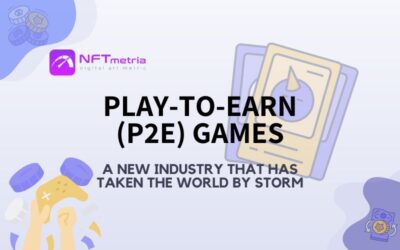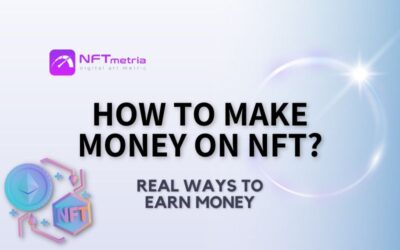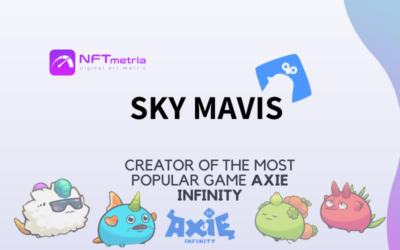Play-to-earn (P2E) games are one of the most promising areas among blockchain projects. Today, they account about 52% of all cryptocurrency wallets in the world, and venture capital funds are investing billions of dollars in the industry. In the first quarter of 2022 alone, investments amounted to $2.5 billion, and by the end of the year this figure may reach $10 billion.
Some earn in P2E from several hundred dollars a month, others call them financial pyramids. In this article, we will tell you how the game economy works and what is important to know if you are interested in trying this type of activity.
What are Play-to-earn (P2E) games?
In simple words, this is an economic model in which the player derives financial benefits by contributing to the virtual world. At the same time, such models are F2P (free-to-play), meaning they can be played for free.
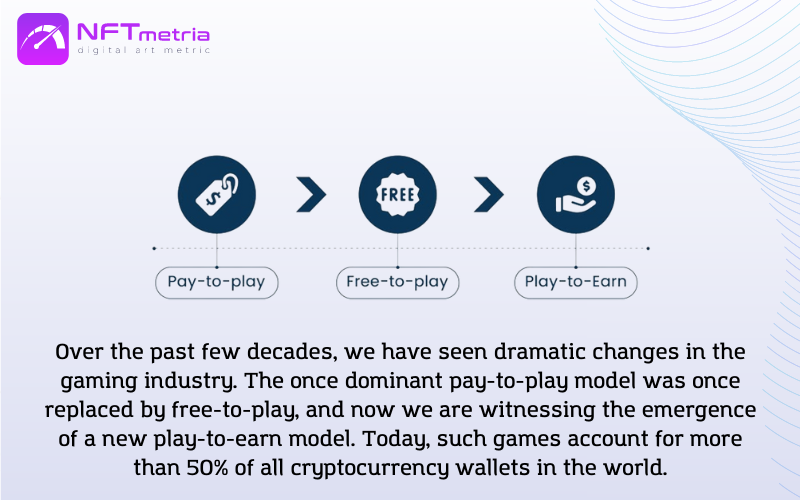
The principle of investment is similar to donations, since the gamer, at will, buys items, pets, currency, unique skills and the appearance of equipment. But the main difference from ordinary games is that everything is implemented using blockchain and NFT technologies.
How it works? Here are some features of P2E:
- Quite often, such gaming requires start-up capital – the purchase of a character.
- The main goal of the players is to create in-game values for further sale.
- For certain actions, a reward is issued, which you can keep or resell quite legally.
- Anything can be a reward, including cryptocurrencies and valuable non-fungible tokens (NFTs).
- NFT assets are in the crypto wallets of the players.
At the same time, it is worth noting that incentives from developers come to the effort and time invested. The sale of any things and objects, including the character himself, is not only allowed, but even welcomed.
Play-to-earn market development
In itself, the concept of earning money in online games is not new. It was also possible to make transactions with in-project currency, sell weapons and upgraded accounts within the framework of classic gaming. However, the processes were opaque and uncontrolled: it was impossible to confirm the ownership of the item and guarantee the security of the transaction.
Because of this, guarantors even appeared on the market – intermediaries who, for a percentage of the transaction, helped to fulfill the necessary conditions: transfer the account to the buyer, money to the seller. In fact, they performed the function of a smart contract, which now controls in-game operations on the blockchain.
Since 2013, the first games using cryptocurrencies began to develop, but they were not widely used. The breakthrough came a few years later, with the development of the NFT, when it became possible to prove ownership of rare items in games.
One example was the sensational CryptoKitties in 2017, created on the blockchain Ethereum. It allowed to breed token kittens with unique characteristics and sell them for ETH. In the first week after the launch, the volume of transactions in CryptoKitties amounted to about $4 million. Despite the primitive functionality of the project, it demonstrated the mechanics of confirming ownership of scarce items and making money on them.
The first truly mass was Axie Infinity. It was created in 2019, but only became widespread in 2021 during the boom of play-to-earn projects. And the global Covid-19 pandemic also played a role, when everyone was at home in self-isolation.
During crises and economic upheavals, Play-to-Earn is increasingly becoming a source of income for many people. And for some, it becomes a full-fledged alternative to offline work, as happened in the Philippines.
Since 2021, a whole gaming segment has been formed – GameFi , which includes various projects, including those using NFT.
GameFi categories are various:
- play-to-earn without investments;
- play-to-earn, where financial injections are required;
- entire worlds like the metaverse;
- projects that allow transferring games to blockchains.
Despite the bearish trend in the crypto market , the number of unique active wallets in games today remains stable and makes up almost half of the total number of wallets:
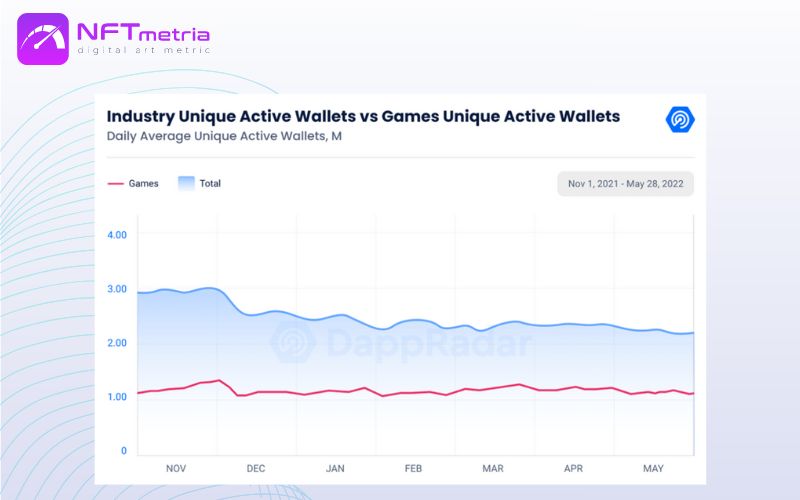
The internal economy of Play-to-earn games
- Decentralized gaming projects always issue their own tokens, which are the game currency and can be sold on exchanges to real money. Sometimes, in addition to them, management tokens are issued. Their holders can vote on changes to the project and receive a percentage of the game’s income.
For example, in Sandbox, the SAND token is the in-game currency and governance token. Splinterlands has two tokens – DEC, which is the game currency, and SLS, through which the project is managed. Some projects go further and release three cryptocurrencies at once, but this does not happen often.
Such tokens have the same properties as any cryptocurrency: they have a rate that can rise and fall, a community, and their own wallets for storage.
- The capital of the game is formed by participants who invest in the purchase of NFTs or upgrading accounts. The larger the total investment, the higher the prices to in-game assets, and hence the overall profitability of the project.
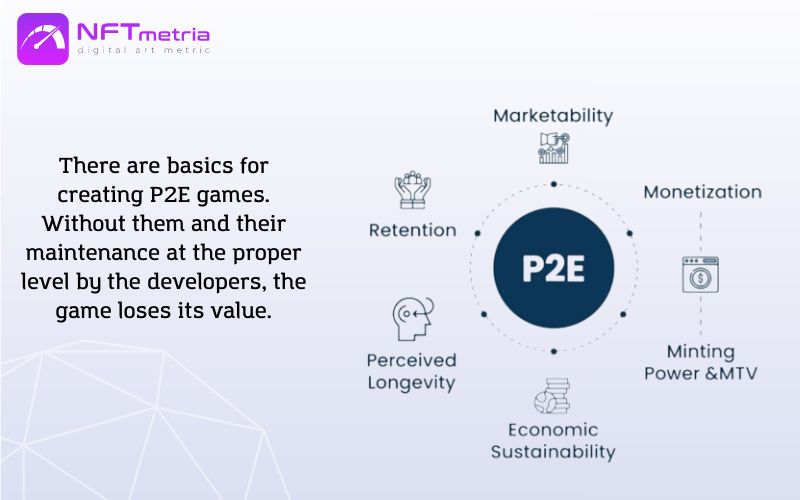
The security of transactions is guaranteed by the blockchain: unique items cannot be copied, and all transactions with them are transparent to all participants. Earnings can be withdrawn to an exchange or an NFT marketplace and exchanged to popular stablecoins there.
Developers can monetize such projects by:
- Commissions for transactions within the game,
- Selling NFTs to players for cryptocurrencies,
- Royalties from the sale of mined NFT items by gamers. In this case, NFTs are given out to players to completing tasks and reaching levels. Further, they themselves set the price for items and can sell them for an in-game token or cryptocurrency. From each such transaction, developers receive royalties
Most often, monetization is combined. And in order to players to cover all their needs within the project, internal marketplaces are often created. For example, like the aforementioned Axie Infinity, it has its own marketplace, which is on the same list as OpenSea and Binance NFT in terms of sales.
How can you earn in P2E?
The average player can earn several hundred dollars a month in the play-to-earn industry, depending on the specific project and its currency. The more investments, the higher the expected income.
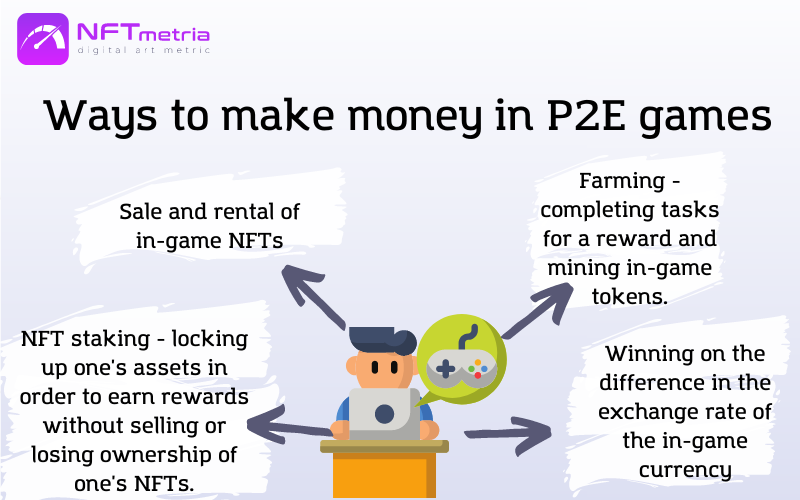
You can earn in play-to-earn in the following ways:
1.Farming – completing tasks for a reward and mining in-game tokens.
Farming in the game will require NFTs – most often characters or cards. For example, in Axie Infinity a basic set of 3 characters today will cost at least $175, the average prices to the optimal team are about $300.
The acquisition of NFT is an investment in itself: by investing in the purchase of a valuable character and digital land, you can not only increase the income from the gameplay, but also rent out assets or resell them profitably in the future. When choosing NFTs, it is important to consider their payback periods.
Aavegotchi has a minimum entry threshold of $150-200, which is the price of the smallest piece of digital land. In this case, the investment can pay off in a few months.
You can play for free, just by renting the desired character. In this case, the player gives about 50% of the earnings to the account owner. Today, there are gaming guilds on the market that create a large number of accounts, train new players and finance their initial investment.
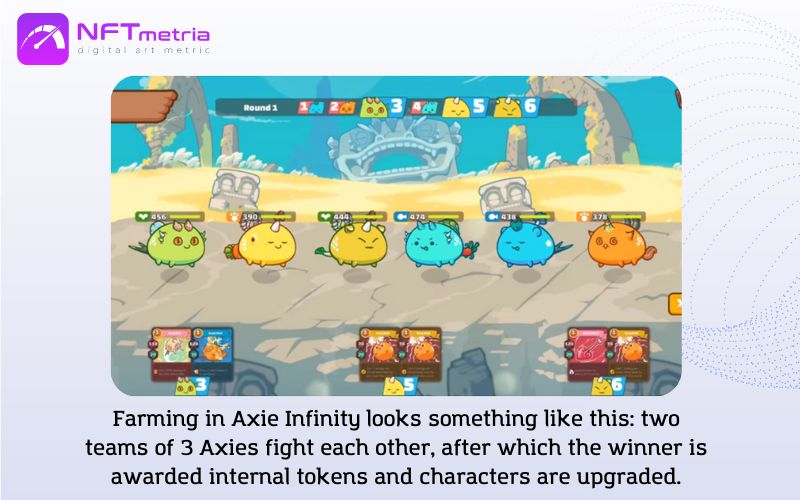
For single players, farming is considered not the most profitable tool. For example, in Axie Infinity can farm about 100-200 SLP per day. A year ago, at the peak of the exchange rate, it was equivalent to several tens of dollars, but today it is only $0.5-1.
2. Selling or renting NFTs, such as digital land or farmed creatures.
It is more profitable to earn on the sale of mined NFTs. In the card game Gods Unchained, the player receives a free deck of cards at the entrance, with which he can earn points for victories and get rare cards. Farming brings little, but for the resale of valuable cards you can get up to $400 per month.
3. Staking of in-game NFTs and currencies. In this way, you block your assets on a decentralized platform in order to receive rewards without selling or losing ownership of your NFTs.
4. The emerging direction is the metaverses. This is an online game with a full-fledged economic system on the blockchain. The metaverse imitates the real world: instead of yourself, you create an avatar through which you can walk or work in digital coworking spaces. And also meet in a virtual bar with friends, hang out in an amusement park and even attend celebrity concerts: for example, listen to Snoop Dogg and dance with his avatar. That is, it is a virtual world, where there is also a business, earnings, and its main value is land that can be sold, bought or rented.
5. One of the trends that are gaining momentum is move-to-earn. These are games in which you can get rewards during training. Thus, the popular app Stepn promised to earn about $25 at the peak of its popularity to a ten-minute run in NFT sneakers. Why are we talking about him in the past tense? Here we got to the minuses of the P2E format.
In fact, there are more ways to earn money. Read about it in our article “How and how much can you earn in NFT games?“.
Risks of Play-to-earn games
Although crypto games offer people a proven way to earn cryptocurrencies and then exchange them to fiat money, there are risks to consider:
-
Risk of losing NFTs
Crypto gamers are often afraid of losing their tokens or NFTs while playing. There are several possible scenarios to when this might happen:
- When trying to send them from your wallet to another wallet that does not support your NFT type.
- If you have been a victim of a cryptocurrency scam and sent your NFT to a scammer
- You have given a malicious smart contract permission to access your wallet.
To avoid these risks, make sure you understand the types of tokens your wallet supports and always send them to the correct address. Interact only with smart contracts from reputable projects and make sure you don’t fall victim to a scammer.
-
Volatility
This risk is typical for the cryptocurrency market, where drawdowns are not uncommon. If Axie Infinity tokens such as AXS and SLP are falling in price, players may not have enough time to cut their losses. The project allows users to cash out every 14 days, which means your tokens can be locked up when you need them.
Have you heard about the sensational Stepn, in which people ran to earn money? The entrance to the project is through the purchase of sneakers, the cost of which is from $ 1,000. Perhaps this game was so popular that even waiting lists for entry were created, where there were up to 200 thousand people. So, the internal currency GST, on which all tokenomics is based, has lost 90% of its value in just a week. Hundreds of thousands of players around the world have lost thousands to hundreds of thousands of dollars.
Enter a new game, and even more so, invest your own funds in it only after carefully studying the tokenomics of the project. Don`t fall for the hype, trust only your own analytics and the opinion of uninterested experts.Great idea!
-
Regulation
The transparency and decentralized nature of the blockchain means that third parties are not required to verify and approve transactions. Gaming operators are generally not required to comply with regulatory standards such as AML (anti-money laundering) and KYC (know your customer). This increases the risk of fraud. And, unfortunately, it happens quite often. For example, one of the largest thefts in the history of cryptocurrency occurred in the spring of 2022 at Axie Infinity. The fraudster withdrew from the accounts of users in total about 620 million dollars. Creators Sky Mavis is raising massive investments to make up for all losses to users.
How are Play-to-earn games secured?
In fact, the very concept of play-to-earn is not an innovation in the crypto world. There have been online games with financial injections about a long time. The main difference is that now characters, game currencies or items can be bought cryptocurrency. And they all exist on the blockchain. It is important to understand that the blockchain has properties that make it easy to prove that it is a particular person who owns the items, even if we are talking about some kind of rarities or artifacts.
In essence, the blockchain is a database, and since it is based on a network of computing devices, it will be impossible to forge “property rights”, copy or delete data. Thus, it is the blockchain that provides security:
- prevents fraud;
- responsible for the absence of unauthorized data modification;
- prevents items from being duplicated;
- maintains a currency account.
In the game world, an important role is given to unique items, which, according to the logic of the game, should be in a single copy. And since “copy” and “paste” as functions do not exist, there is no way the item can lose its unique status.
Forecast and prospects
Experts agree that GameFi is the future. At what such development will be beneficial for both developers and gamers. The former get new opportunities for monetization and distribution. And the second – ways of real earnings in the form of a game.
The success of individual players and teams shows that all this is real. This means that developers will soon become more active and will create NFT games at an accelerated pace.
However, there is also a concern that can be traced. Most of the modern crypto games have extremely primitive graphics. They seem to refer back to the 2000s. In addition, the gameplay is also rather meager, monotonous. In terms of engagement, they are very inferior to giants like World of Tanks or World of Warcraft. There, people spend all their free time for years and “live” in the virtual world, spending their money on development and “pumping”.

Why is it dangerous? Initially, there is interest and a surge in popularity. However, the process quickly gets boring and there is a regression, up to complete oblivion. Play-to-Earn are designed for the fact that more and more new players will constantly connect to them, make cash injections, and then recoup their investments. But if this does not happen, then the items and the pegged currency will quickly lose their value, which happens from time to time in this market.
Conclusion
The concept of Play-to-Earn is an innovation in the world of the blockchain industry that can revolutionize the gaming economy. The open economic model ensures that the players involved in the development of the game world receive financial rewards to this. Then the domino effect is triggered – seeing how other users earn, more and more new participants come to the game. At the moment, there is an upward trend in this market. In addition to retail investors, large institutions and investment funds invest in them. The immediate future of the industry looks promising and favorable.

